These buildings yoostabe schools.
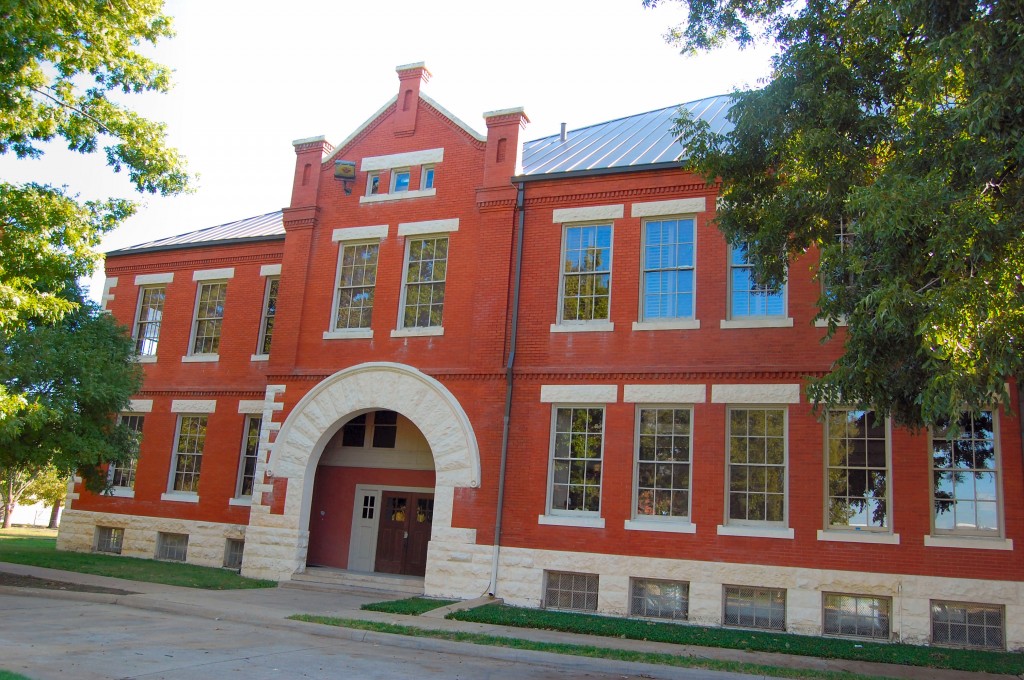 Stephen F. Austin School (Sanguinet, Messer, and Messer, 1892) on Lipscomb Street at West Broadway was the Sixth Ward school for grades one through six. The Sixth Ward was south of downtown.
Stephen F. Austin School (Sanguinet, Messer, and Messer, 1892) on Lipscomb Street at West Broadway was the Sixth Ward school for grades one through six. The Sixth Ward was south of downtown.
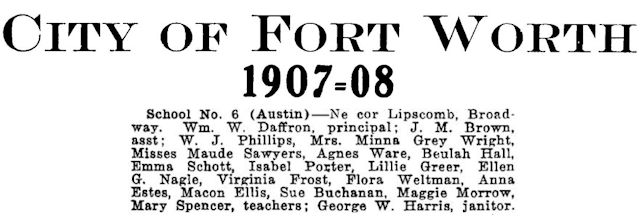 The school had fifteen teachers in 1907.
The school had fifteen teachers in 1907.
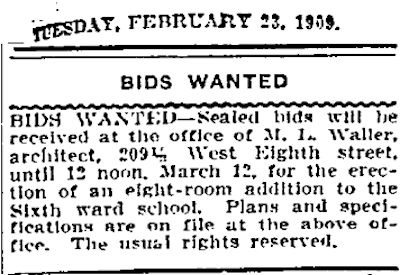 In 1909, according to Tarrant County Historic Resources Survey, the school was doubled in size when Sanguinet and Staats designed a near-twin addition that gave the building a second arched entrance. But it was architect Marion Waller who advertised for bids on the addition.
In 1909, according to Tarrant County Historic Resources Survey, the school was doubled in size when Sanguinet and Staats designed a near-twin addition that gave the building a second arched entrance. But it was architect Marion Waller who advertised for bids on the addition.
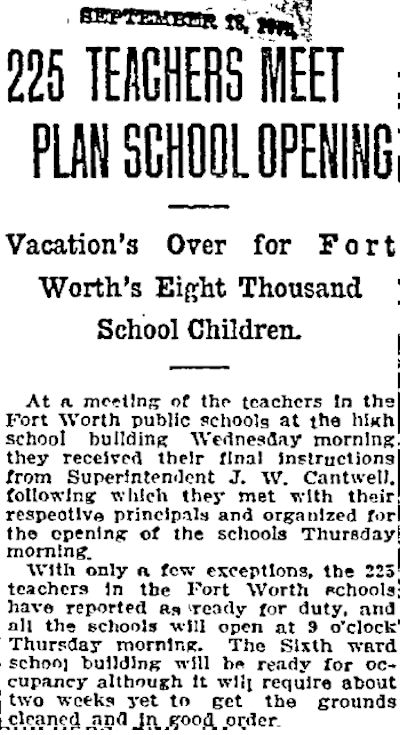 Regardless, this grand building, now headquarters of Williamson-Dickie, is the oldest surviving ward school and one of the oldest surviving designs of Marshall Sanguinet. The new addition was completed in time for the start of school in September 1909.
Regardless, this grand building, now headquarters of Williamson-Dickie, is the oldest surviving ward school and one of the oldest surviving designs of Marshall Sanguinet. The new addition was completed in time for the start of school in September 1909.
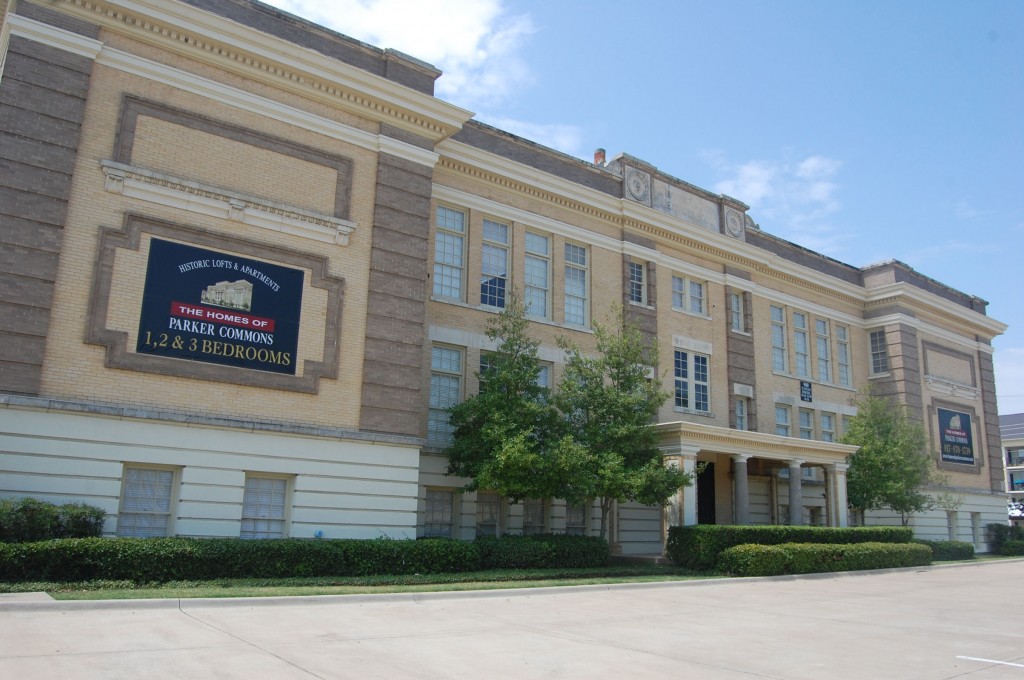 By 1909 Fort Worth had an Eleventh Ward, and the Eleventh Ward/Alexander Hogg School was built at 309 West Terrell Street.
By 1909 Fort Worth had an Eleventh Ward, and the Eleventh Ward/Alexander Hogg School was built at 309 West Terrell Street.
 Alexander Hogg (1830-1911) was Fort Worth’s first permanent superintendent of schools, serving sixteen years. The Alexander Hogg building is part of Parker Commons apartments.
Alexander Hogg (1830-1911) was Fort Worth’s first permanent superintendent of schools, serving sixteen years. The Alexander Hogg building is part of Parker Commons apartments.
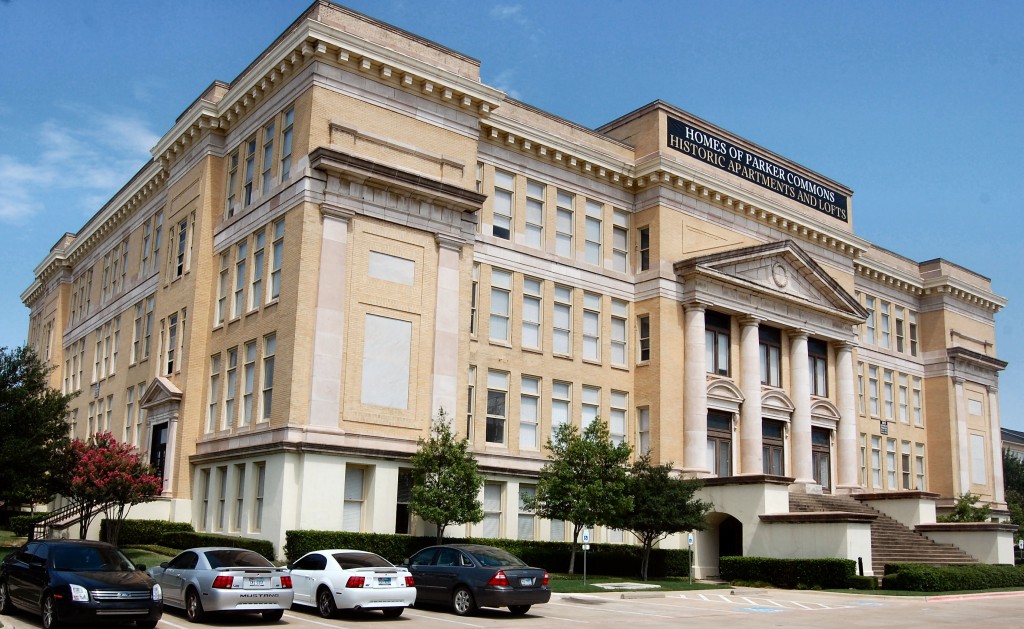 Just around the corner from the Hogg school, this grand building was built in 1911 on Jennings Avenue as Fort Worth High School (also called “Central High School”) after the first Fort Worth High School burned in 1910. (You are looking at the rear of the building because trees along Jennings Avenue obscure the even more impressive front of the building.)
Just around the corner from the Hogg school, this grand building was built in 1911 on Jennings Avenue as Fort Worth High School (also called “Central High School”) after the first Fort Worth High School burned in 1910. (You are looking at the rear of the building because trees along Jennings Avenue obscure the even more impressive front of the building.)
 The building, designed by architect M. L. Waller, sits on land once owned by B. B. Paddock, who lived nearby. As for the Star-Telegram report’s $75,000/$175,000 discrepancy in the cost of the school, the school board ended up paying $167,000 ($4.1 million today). This building, too, is now part of Parker Commons.
The building, designed by architect M. L. Waller, sits on land once owned by B. B. Paddock, who lived nearby. As for the Star-Telegram report’s $75,000/$175,000 discrepancy in the cost of the school, the school board ended up paying $167,000 ($4.1 million today). This building, too, is now part of Parker Commons.
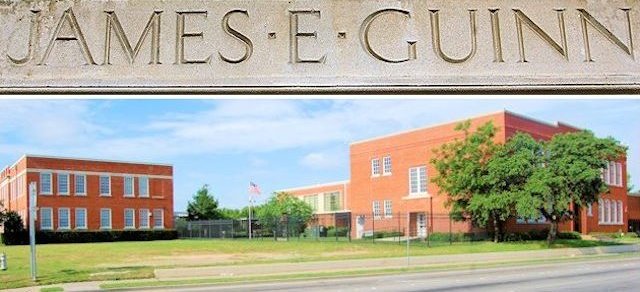 The original James E. Guinn School (Sanguinet and Staats) was built in 1918 at the corner of Rosedale and Louisiana streets (I-35W displaced Louisiana Street in 1952) in Fort Worth’s African-American “downtown.”
The original James E. Guinn School (Sanguinet and Staats) was built in 1918 at the corner of Rosedale and Louisiana streets (I-35W displaced Louisiana Street in 1952) in Fort Worth’s African-American “downtown.”
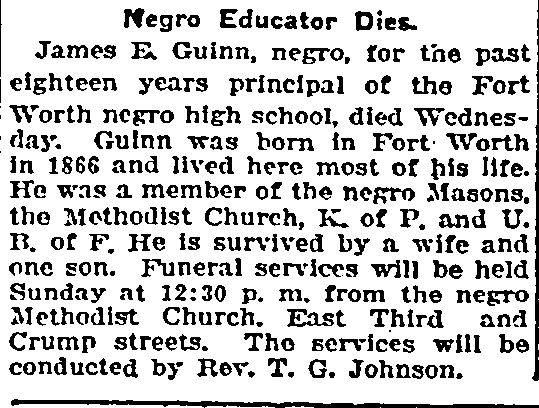 James E. Guinn was principal of School No. 13 (South Side Colored School) until his death in 1917. In 1927 an elementary school (Clarkson) (right in photo) was added beside the 1918 building. In 1937 a middle school (Withers) (left in photo) was added behind the 1918 building. The Guinn schools closed in 1980. The 1918 building was demolished in 1986. The surviving buildings now house the city’s Business Assistance Center.
James E. Guinn was principal of School No. 13 (South Side Colored School) until his death in 1917. In 1927 an elementary school (Clarkson) (right in photo) was added beside the 1918 building. In 1937 a middle school (Withers) (left in photo) was added behind the 1918 building. The Guinn schools closed in 1980. The 1918 building was demolished in 1986. The surviving buildings now house the city’s Business Assistance Center.
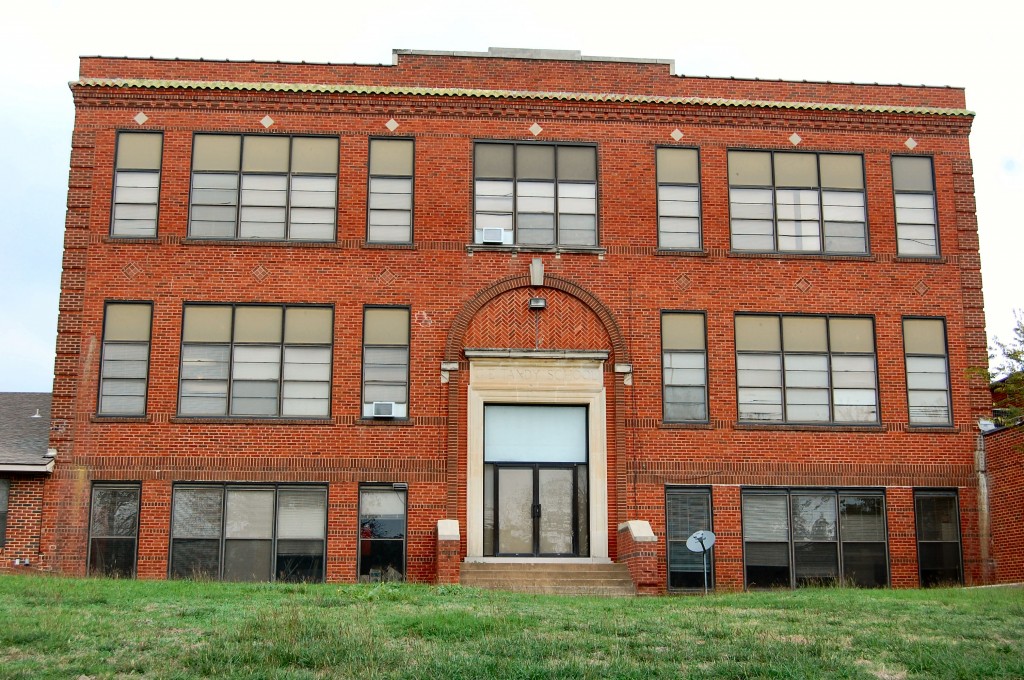 Tandy Elementary School on Purington Avenue in Meadowbrook was built in 1922 by the Polytechnic school district and named for Poly civic leader George Tandy (1846-1921). The school closed in the 1970s.
Tandy Elementary School on Purington Avenue in Meadowbrook was built in 1922 by the Polytechnic school district and named for Poly civic leader George Tandy (1846-1921). The school closed in the 1970s.
 The school building was the temporary home of First Baptist Church in 1977. The building is now part of Tandy Village Assisted Living.
The school building was the temporary home of First Baptist Church in 1977. The building is now part of Tandy Village Assisted Living.

 This building (Clarkson, 1911) on LaSalle Street just east of Sylvania Avenue yoostabe Riverside Negro School, built to serve the Riverside school district’s African-American community. The school district organized in 1905. In 1931 the two-room school had 105 students. After 1950 the building was converted into a residence and then a church youth center. The 1911 cornerstone can be seen near the downspout (see inset).
This building (Clarkson, 1911) on LaSalle Street just east of Sylvania Avenue yoostabe Riverside Negro School, built to serve the Riverside school district’s African-American community. The school district organized in 1905. In 1931 the two-room school had 105 students. After 1950 the building was converted into a residence and then a church youth center. The 1911 cornerstone can be seen near the downspout (see inset).
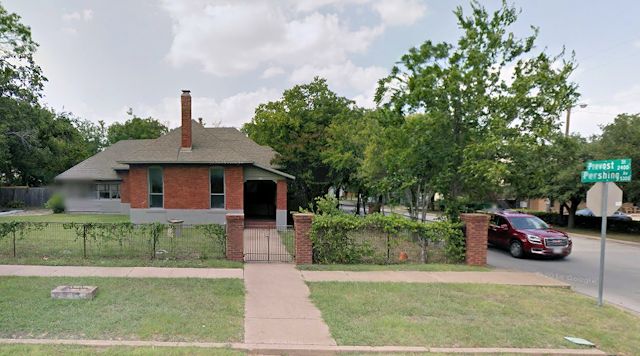 Arlington Heights Public School (1897) at 5300 Pershing Avenue was the first school in the Arlington Heights Independent School District. The building now houses Lexa’s Flowers.
Arlington Heights Public School (1897) at 5300 Pershing Avenue was the first school in the Arlington Heights Independent School District. The building now houses Lexa’s Flowers.
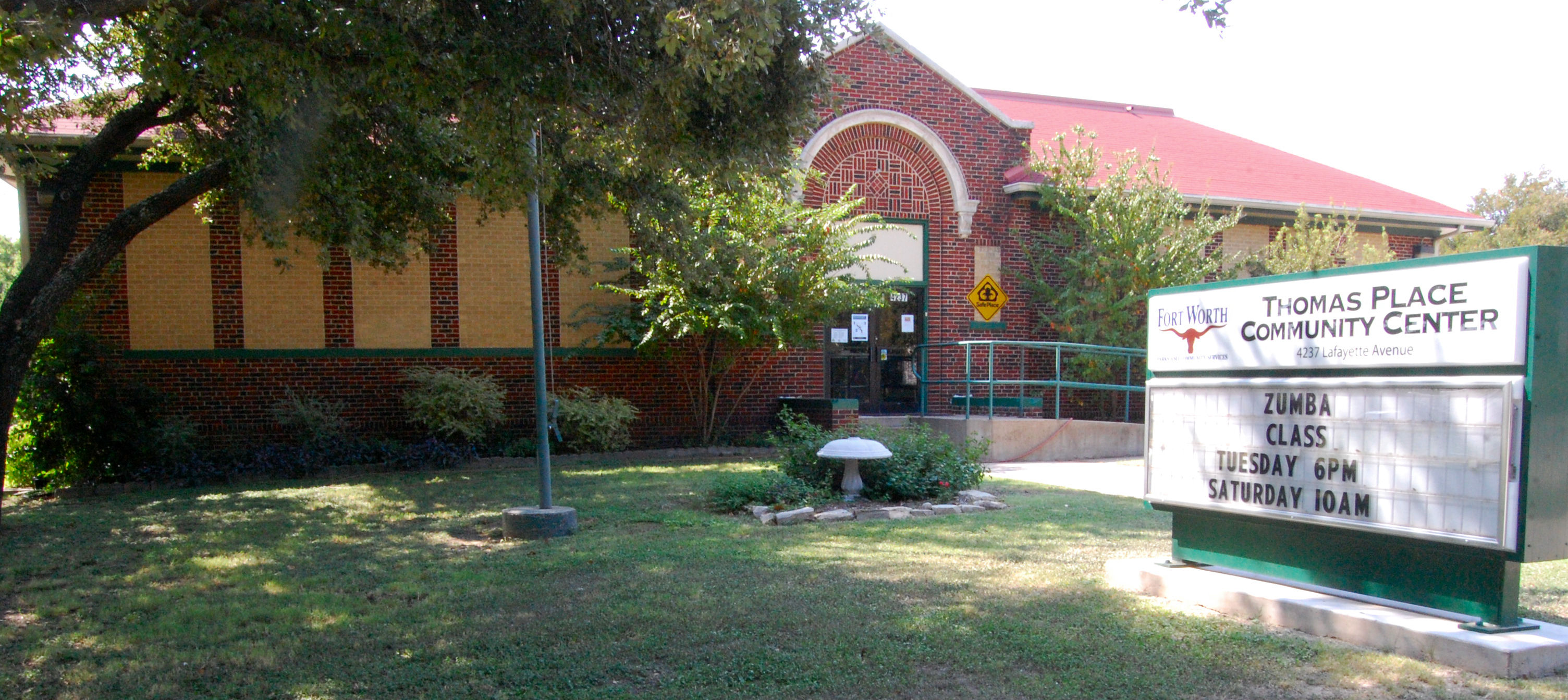 This building at 4237 Lafayette Avenue in Arlington Heights yoostabe Hi Mount Elementary School (1922) of the Arlington Heights Independent School District. Architects were Clarkson and Gaines. The building now houses a city community center.
This building at 4237 Lafayette Avenue in Arlington Heights yoostabe Hi Mount Elementary School (1922) of the Arlington Heights Independent School District. Architects were Clarkson and Gaines. The building now houses a city community center.
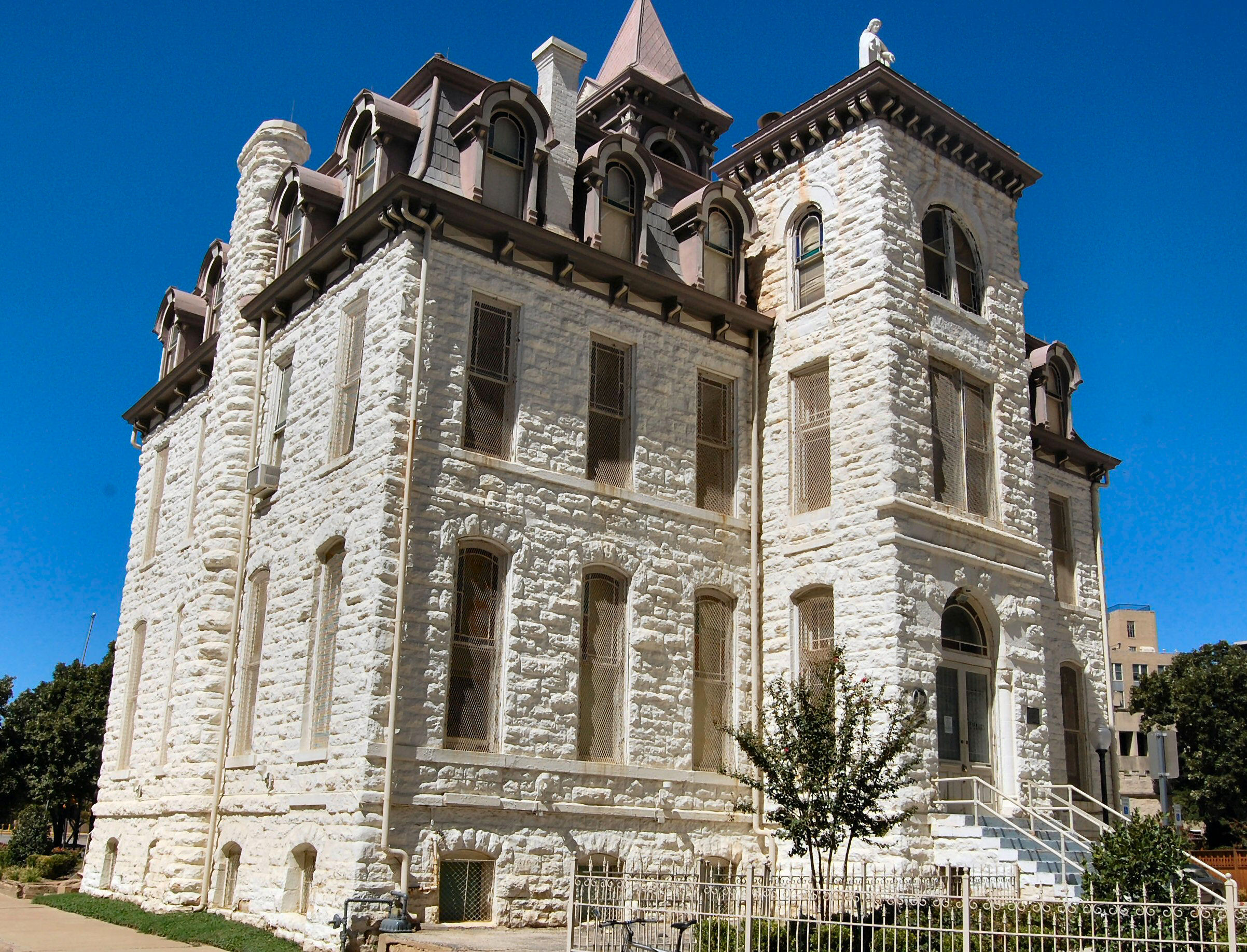 St. Ignatius Academy (Kane, 1889) was operated by the Sisters of St. Mary of Namur. The building, part of the St. Patrick’s Cathedral complex, is now used as a hall.
St. Ignatius Academy (Kane, 1889) was operated by the Sisters of St. Mary of Namur. The building, part of the St. Patrick’s Cathedral complex, is now used as a hall.
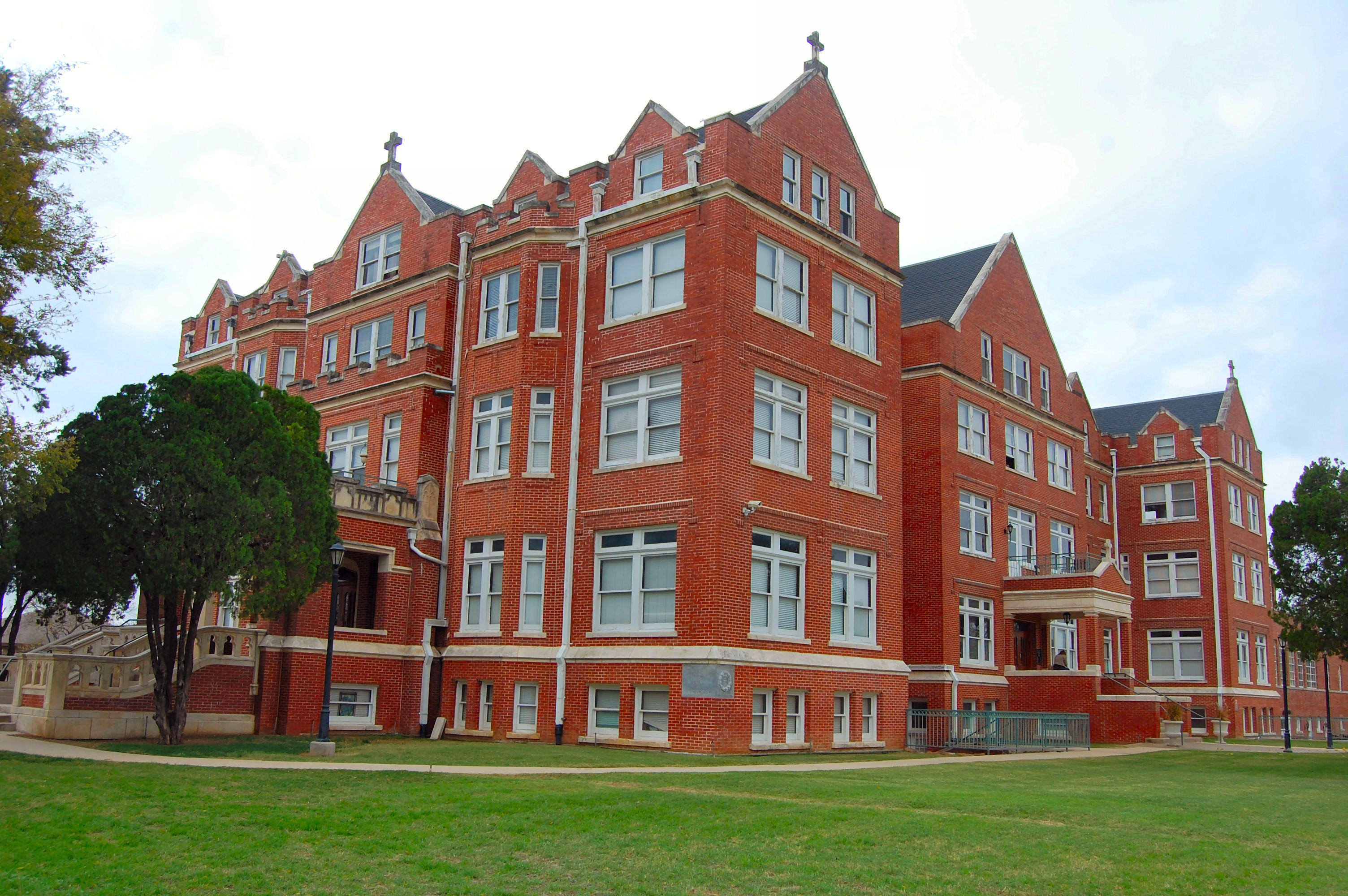 In 1910, with little St. Ignatius Academy becoming crowded, the sisters moved south and built Our Lady of Victory Academy (Sanguinet and Staats) as a school for girls. Today the OLV building houses Victory Arts Center, a residence for the creative community.
In 1910, with little St. Ignatius Academy becoming crowded, the sisters moved south and built Our Lady of Victory Academy (Sanguinet and Staats) as a school for girls. Today the OLV building houses Victory Arts Center, a residence for the creative community.
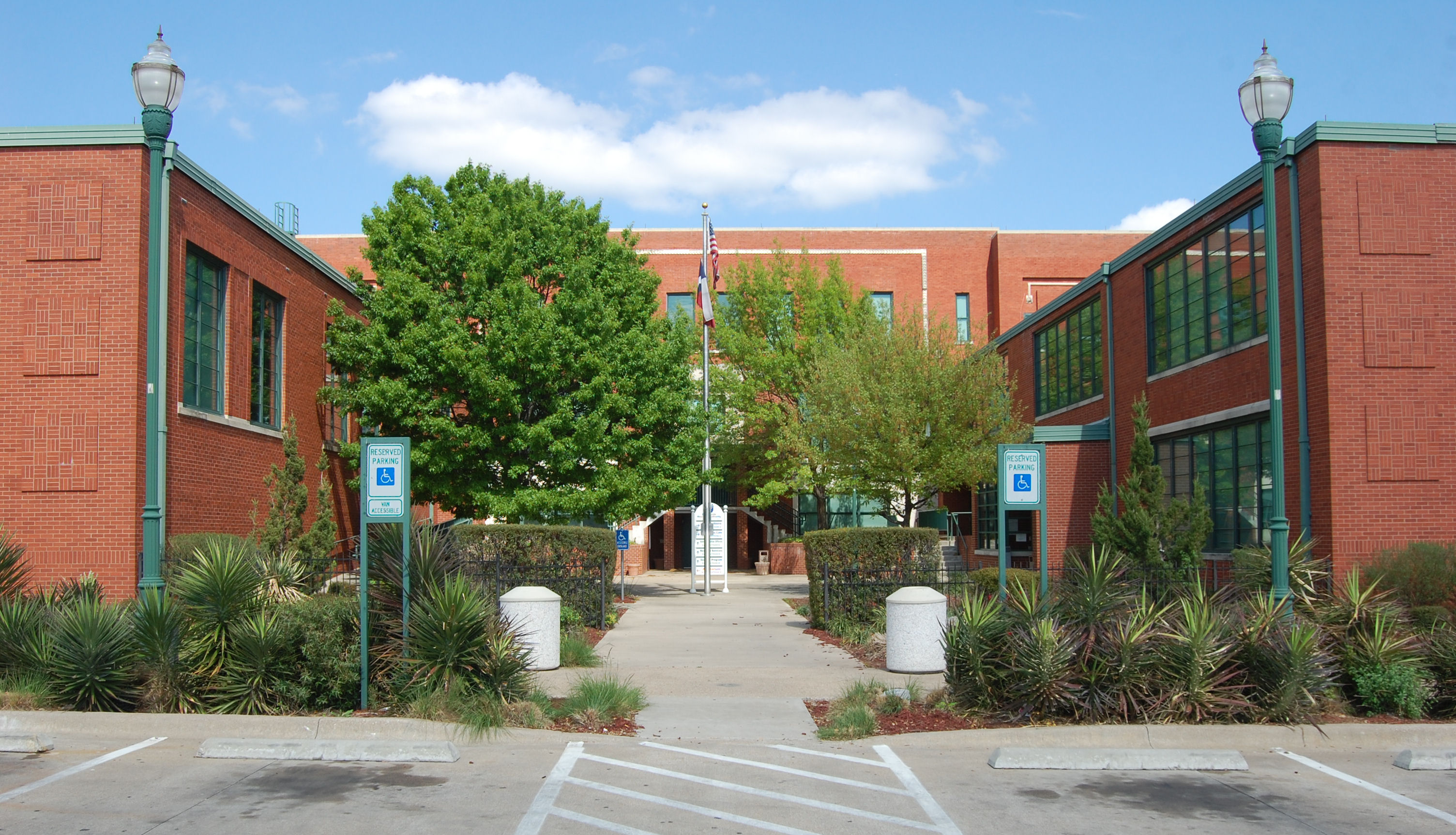 This building at 1201 East 13th Street in the Third Ward yoostabe the “Colored High School.”
This building at 1201 East 13th Street in the Third Ward yoostabe the “Colored High School.”
 The new school was part of a big building program under way in 1909. The Star-Telegram story on Fort Worth as an educational center featured a panoramic photo of the campus of Polytechnic College.
The new school was part of a big building program under way in 1909. The Star-Telegram story on Fort Worth as an educational center featured a panoramic photo of the campus of Polytechnic College.
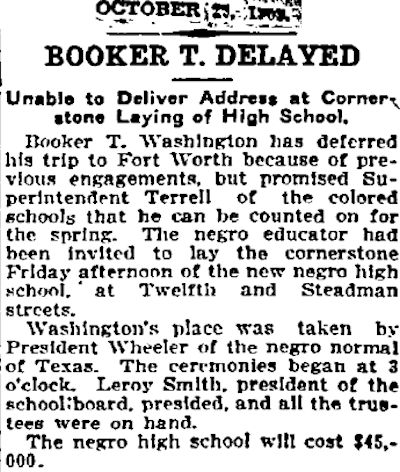 Booker T. Washington was invited to speak as the cornerstone was laid in 1909 but was unable to attend.
Booker T. Washington was invited to speak as the cornerstone was laid in 1909 but was unable to attend.
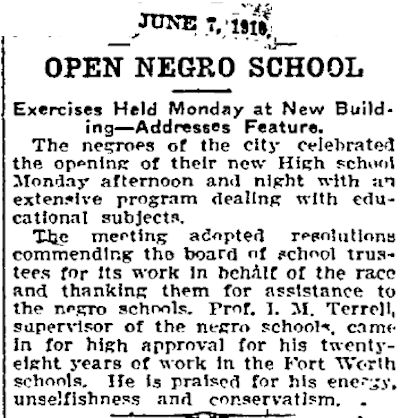 By the time the school opened in 1910, African-American educator Isaiah Milligan Terrell had been working for Fort Worth public schools twenty-eight years.
By the time the school opened in 1910, African-American educator Isaiah Milligan Terrell had been working for Fort Worth public schools twenty-eight years.
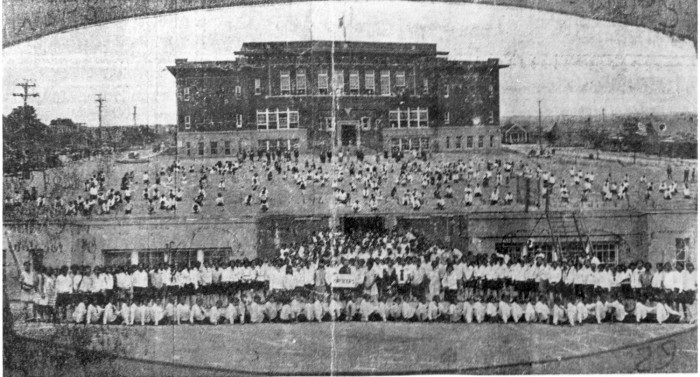 In 1921 the school was renamed for Terrell. Today the building, with wings added in 1956, houses the Fort Worth Housing Authority. Photo is from 1921.
In 1921 the school was renamed for Terrell. Today the building, with wings added in 1956, houses the Fort Worth Housing Authority. Photo is from 1921.
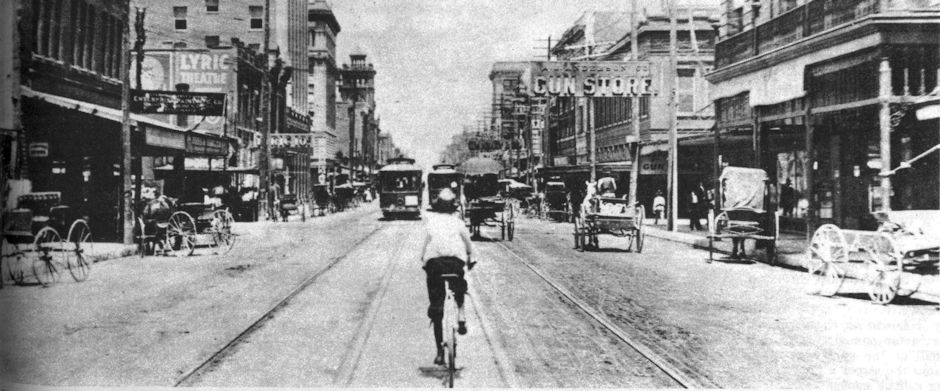





…..and did we mention that Mr. Guinn is a negro?
The newspaper death notice mentions his race. As far as I know, Fort Worth schools for African Americans had African-American faculties.
I was just amused that ” negro ” came before his accomplishments in the news clipping.
And it would be that way in newspapers for years to come. The city directory did not stop using “(c)” for “colored” until 1924.
This was so interesting! Thank you for compiling all this information. I really enjoyed it.
Thanks, Claudia.